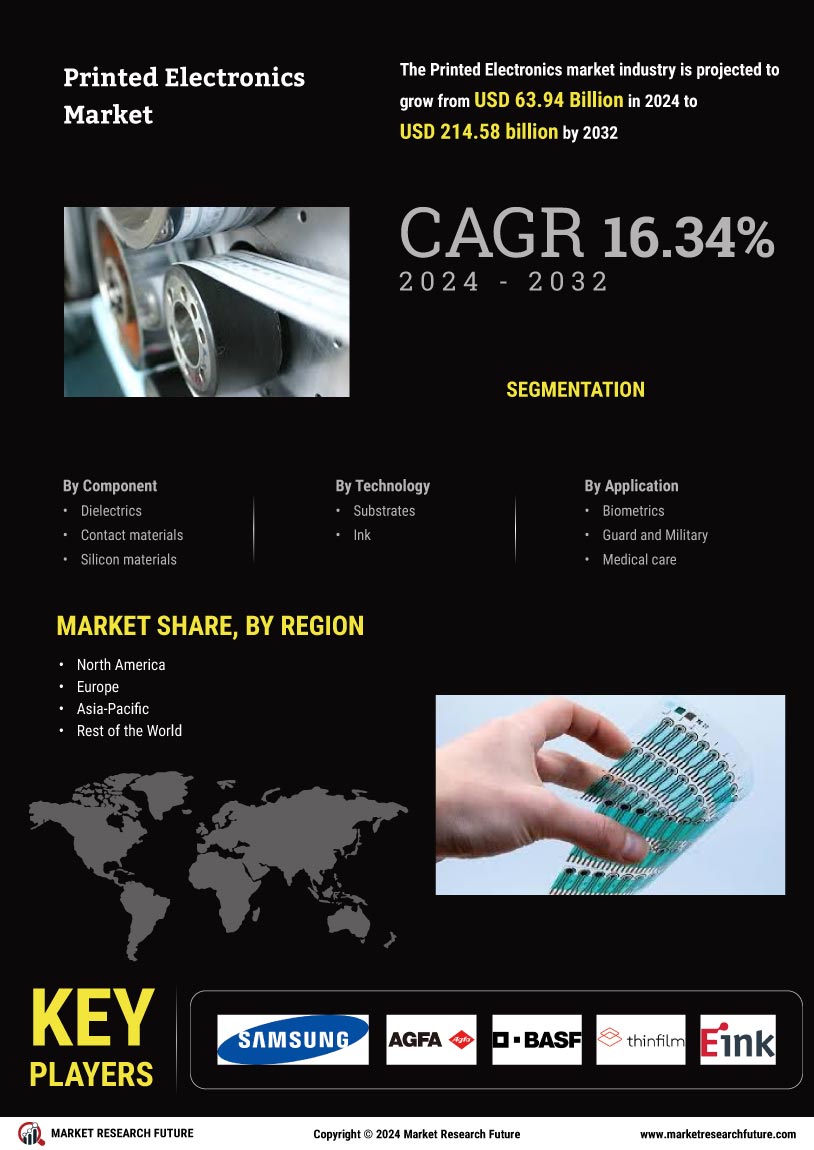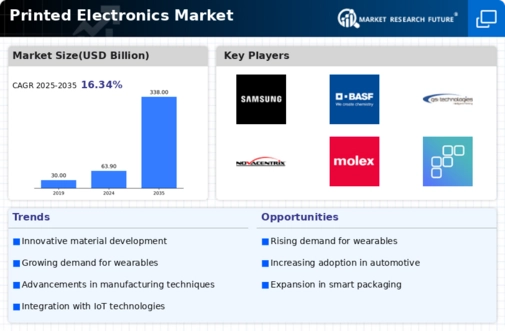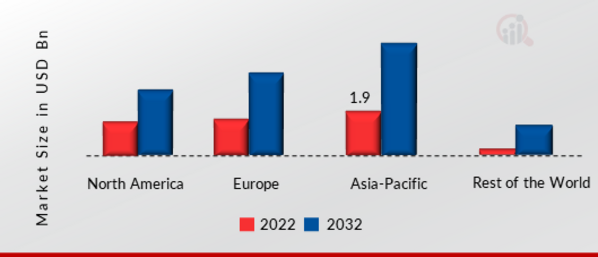Market Growth Projections
The Global Printed Electronics Market Industry is poised for remarkable growth, with projections indicating a market size of 63.9 USD Billion in 2024 and an anticipated increase to 338.0 USD Billion by 2035. This trajectory suggests a robust compound annual growth rate (CAGR) of 16.34% from 2025 to 2035. Such growth is indicative of the expanding applications of printed electronics across various sectors, including automotive, healthcare, and consumer electronics. The increasing adoption of smart technologies and the demand for innovative solutions are likely to drive this growth, reflecting the industry's dynamic nature and its potential to reshape the future of electronics.
Advancements in Printing Technologies
Technological advancements in printing methods significantly propel the Global Printed Electronics Market Industry forward. Innovations such as inkjet and screen printing enable the production of intricate electronic components with high precision and efficiency. These advancements not only reduce manufacturing costs but also enhance the scalability of production processes. For example, the ability to print conductive inks on various substrates opens new avenues for applications in smart packaging and wearable technology. As these technologies evolve, they are likely to attract investment and foster collaboration among industry players, further stimulating market growth and contributing to the projected CAGR of 16.34% from 2025 to 2035.
Rising Demand for Flexible Electronics
The Global Printed Electronics Market Industry experiences a notable surge in demand for flexible electronics, driven by their lightweight and adaptable nature. Industries such as consumer electronics, automotive, and healthcare increasingly adopt flexible displays and sensors, enhancing product functionality and user experience. For instance, flexible OLED displays are becoming commonplace in smartphones and wearables, illustrating this trend. The market is projected to reach 63.9 USD Billion in 2024, with expectations of substantial growth as manufacturers innovate and expand their product lines. This demand reflects a broader shift towards more versatile electronic solutions, indicating a transformative phase for the industry.
Integration of Internet of Things (IoT)
The integration of Internet of Things (IoT) technologies significantly enhances the Global Printed Electronics Market Industry. As IoT devices proliferate, the need for printed sensors and smart labels increases, facilitating real-time data collection and communication. These printed components are essential in various applications, including smart homes, healthcare monitoring, and industrial automation. The ability to produce low-cost, high-performance printed electronics supports the widespread adoption of IoT solutions. This trend is expected to contribute to the market's growth trajectory, with projections indicating a market size of 338.0 USD Billion by 2035, reflecting the critical role of printed electronics in the evolving digital landscape.
Sustainability and Eco-Friendly Solutions
The Global Printed Electronics Market Industry is increasingly influenced by the demand for sustainable and eco-friendly solutions. As environmental concerns rise, manufacturers are exploring biodegradable materials and energy-efficient production processes. This shift aligns with global initiatives aimed at reducing electronic waste and carbon footprints. For instance, companies are developing organic photovoltaic cells that not only provide renewable energy but also minimize environmental impact. The growing emphasis on sustainability is likely to attract consumers and businesses alike, potentially driving market expansion and innovation in eco-conscious printed electronics, thereby enhancing the industry's overall appeal.
Growing Investment in Research and Development
Investment in research and development plays a crucial role in advancing the Global Printed Electronics Market Industry. As companies seek to innovate and improve product offerings, increased funding for R&D initiatives fosters the development of new materials and applications. This investment not only enhances the performance of printed electronics but also encourages collaboration between academia and industry. For example, partnerships between universities and tech firms are yielding breakthroughs in printable electronics, paving the way for next-generation applications. Such collaborative efforts are likely to drive market growth and ensure that the industry remains at the forefront of technological advancements.











